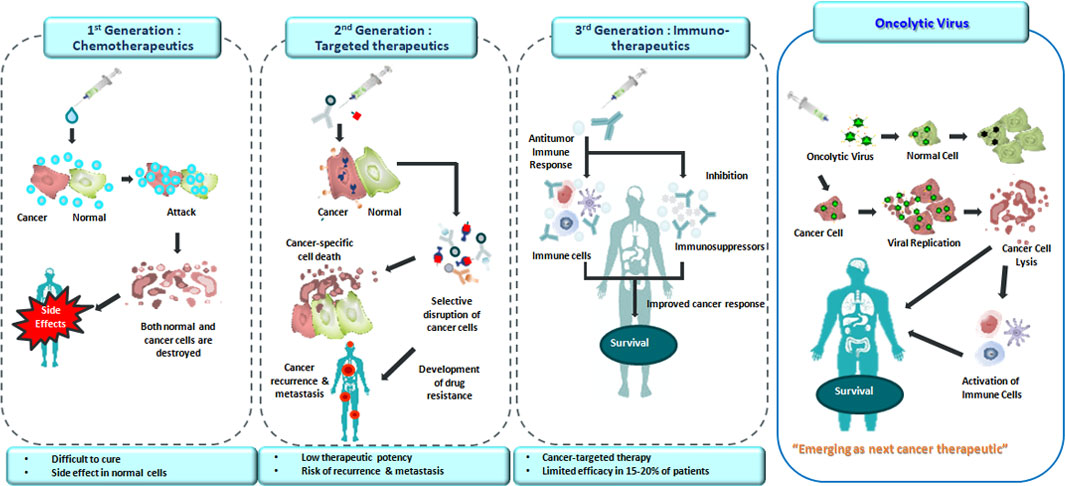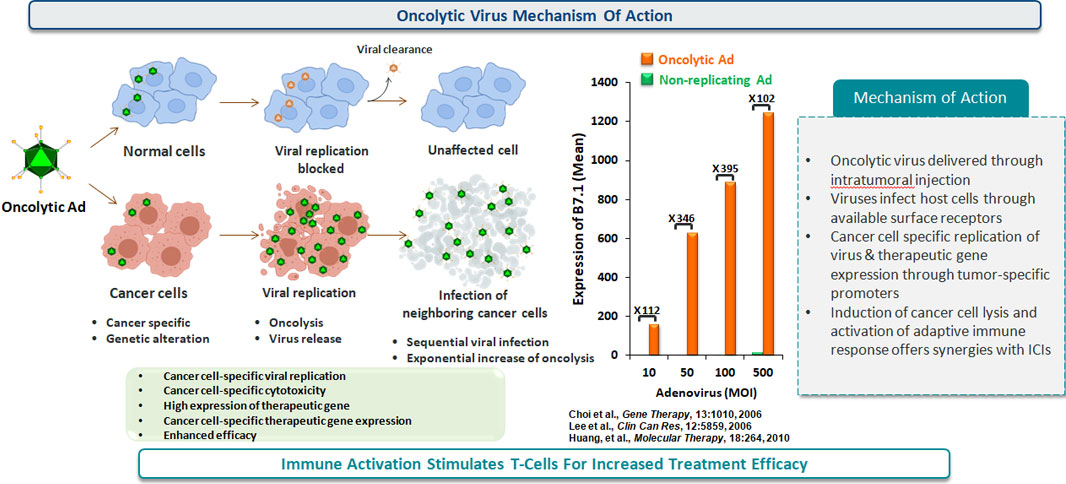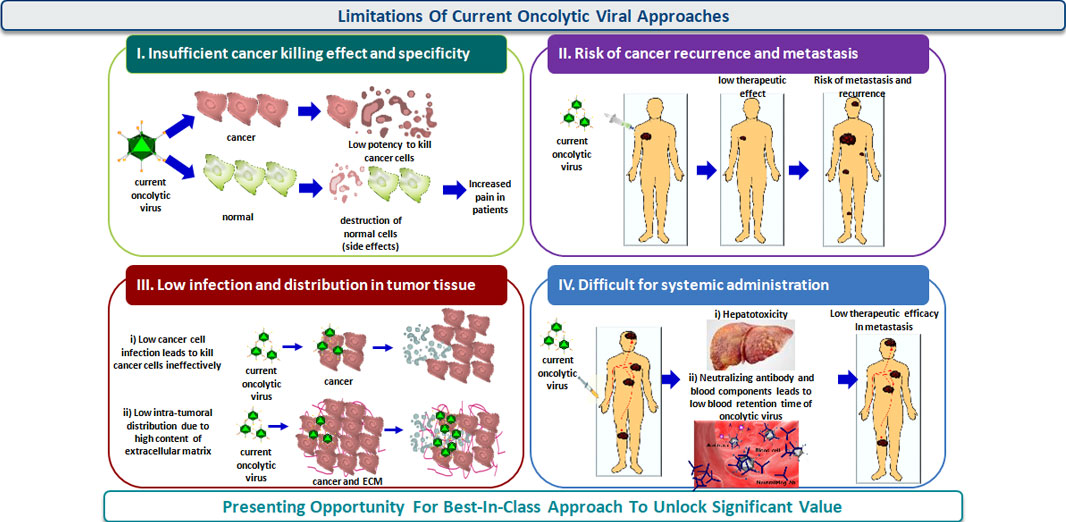Oncolytic virus
Limitations of existing anti-cancer drugs

ㆍFirst generation of cancer drugs were mostly small molecule chemotherapeutics with minimal cancer-targeting capability, 2nd generation was comprised of tumor-targeted therapeutics (e.g., monoclonal antibodies), and the 3rd generation drugs (immunotherapeutics) have focused on restoring and boosting patient’s immune system to precisely eliminate tumor cells. Although significant advancements in potency and safety profile have been achieved over the years, all generation of cancer drugs have distinct limitations and fails to meet the unmet needs of many cancer patients.
ㆍChemotherapeutics have excellent cancer cell killing effect in vitro, but show poor tumor specificity, indiscriminately destroy normal cells, and cause severe side effects in patients
ㆍTargeted therapeutics and immunotherapeutics have fewer side effects than chemotherapeutics due to markedly improved tumor specificity, but both therapeutics are only beneficial in a small subset of cancer patients with tumors expressing a complementary surface surface marker or immunologically hot tumors, respectively.
ㆍDespite their relative success, tumor recurrence and metastasis are observed in patients who initially responded well to targeted therapeutics and only a small subset of patient show good response toward immunotherapy
ㆍOncolytic viruses have emerged as novel therapeutics that will address these unmet needs of cancer patients
Functions of Oncolytic Virus

ㆍOncolytic viruses selectively replicate in and lyse tumor cells, which eventually cause secondary and tertiary infection of neighboring tumor cells and their eventual destruction
ㆍOncolytic viruses are designed to exhibit diminished replication capacity in normal cells, thus minimizing the side effects
ㆍOncolytic viruses are capable of inducing tumor-specific immune responses both locally at the injected site and non-injected distal metastases
Obstacles to Oncolytic Virus




 > R&D
> R&D

